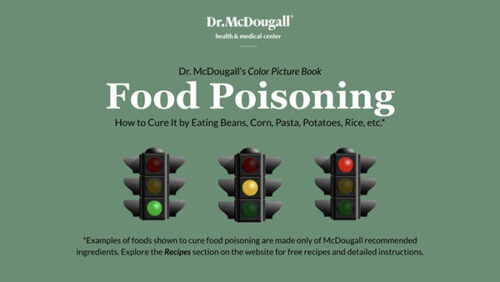Can We Afford Bad Health?
Nearly two-thirds of the residents of United States are overweight, and since 1991 the incidence of obesity has risen from 12% to over 25%. Obesity-related diseases, like type II diabetes, hypertension, arthritis, heart disease, and cancer are consuming most of our healthcare dollars. Spending on hospital and outpatient care is 36% higher and medication costs are 77% higher for obese people than for people in the normal weight range. Obesity has the same impact on chronic health conditions as does twenty years of aging; which exceeds the impact of smoking or problem drinking. Presently, each year, 300,000 deaths are attributed to obesity, and this epidemic costs our country $118 billion.
Try to imagine what will happen to healthcare expenditures over the next three to five years when many of those who are now simply overweight become diabetic? And in five to ten more years when these diabetics develop kidney failure necessitating dialysis, and coronary artery disease requiring acute hospitalizations and heart surgery? Over the next five or ten years costs will skyrocket to the point where no one will be able to afford health insurance under the present model. Can we stop what appears to be an inevitable rise to ‘unaffordable healthcare for everyone?’
I believe the answer is yes – but not unless we change our focus of effort. Higher premiums, fewer benefits, lower physician reimbursements, more doctors, drugs, and hospitals have not been, and never will be, the answers. The only effective and permanent solution to our healthcare crisis is to reduce the commodity: sick people. By taking this approach everyone wins: the insurance companies spend less money and the insured have healthier, happier lives with lower premiums. The money saved can be spent to more fairly compensate physicians and other healthcare providers for their dedicated work.
The first step to solving our healthcare crisis is to identify (and admit to ourselves) the cause of all this poor health. The connection between obesity (along with the costly obesity-related diseases) and the consumption of rich foods (once eaten daily by kings and queens of olden times) is as solid as the connection between drinking and highway fatalities, and cigarette smoking and lung cancer. Unfortunately, this connection is hard for some people to see – especially those still dining at Burger King and Dairy Queen.
Two universal observations provide irrefutable evidence that the cause of obesity and related health problems is primarily due to a shift from a diet consisting mostly of unrefined plant foods to one based on animal-derived and highly processed foods, and secondarily to a decrease in physical activity. Poor health is now pandemic since the fast food industries have made rich foods available to everyone – even the most destitute of people. Americans shelled out more than $110 billion on burgers, fried chicken, and other fast food delights in 2000, compared with $6 billion in 1970.
When I was growing up, as a child, we ate as if every day were a holiday. We started out every morning with Easter (eggs), went on to Thanksgiving (turkey with all the fixings) and Christmas (a plate of ham) for lunch and dinner, and every night after dinner we had a birthday party with cake and/or ice cream. All that feasting has two unquestionable consequences: obesity and chronic disease – it did back then with the royalty, and it does the same today with all of us.
The second indisputable observation is that people living today on primarily plant food-based diets, like those from rural Africa, Japan, Korea, and China, are trim throughout life and have a much lower incidence of heart disease, diabetes, arthritis, multiple sclerosis, and breast, prostate and colon cancer than do Americans. When these people migrate to the United States and exchange their native grain- and vegetable-based diets for higher-fat, higher-protein, and lower-carbohydrate meals — based around meat, dairy products and highly processed foods – most become fat and sick. Unfortunately, many people are confused and think carbohydrates, like rice and potatoes, make people gain excess weight. If these carbohydrates were indeed ‘bad for you,’ then you would see the opposite – Africans and Asians moving to our country and changing to our diet would become trimmer and healthier looking. And that’s just not what you see.
What would happen to people you know who are overweight and suffering from dietary diseases, like type II diabetes, gout, and atherosclerosis, if they were sent on a one way journey to rural Japan to live with a country family, work on a community farm and eat the native rice and vegetable dishes? The answer is: they would become trimmer and healthier.
Over the past 25 years of my medical practice I have seen this transformation from obese and sickly to trim and healthy for thousands of people after making changes from rich foods to a plant food-based, low-fat diet, plentiful in unrefined complex carbohydrates. Scientific research available to all of us through the National Library of Medicine (www.nlm.nih.gov) solidly supports the fact that obesity, type II diabetes, hypertension, heart disease, inflammatory arthritis, and gout can be prevented and often reversed with this very same diet. These results are even better when people exercise daily.
My recent experiences with Blue Cross/Blue Shield of Minnesota (BC/BS/MN) will give you a good sense of the potential savings from a highly effective dietary and lifestyle program. Between 1997 and 2001, I ran three separate groups of patients, chosen for their high utilization of healthcare services, through an 8-day, live-in program with one-year of educational follow-up. For each group of patients, my program resulted in an average 44% annual reduction in healthcare costs. During the same time period, the cost for the rest of the insured for BC/BS/MN increased an average of 12% per year (which translates into a 56% average overall annual reduction in costs).
In addition to cost savings due to reduced medication usage, doctor’s visits, and hospitalizations, people became healthier. On average weight loss was 36 pounds in one year with a 10% reduction in cholesterol values.
Once we all agree on the cause and solution to our financially devastating healthcare problems, i.e., making the sick, healthy, then we can focus on implementation. People understand money best, and until we equate their health in these terms, they will not know why it is so important to make long overdue changes, and more importantly, they will not take action. We already have precedence for tying one’s behaviors to the price they pay for insurance: automobile insurance rates rise appropriately for those who won’t drive responsibly and life insurance is more expensive or unattainable for those who have high-risk behaviors. Why not apply the same standards for health insurance – for those costly people who can’t keep out of the cookie jar or find a reason to go for a daily walk?
If I were in charge of a health insurance company, people’s rates would go up in relation to the risk factors for diseases, over which they have direct control by the choices they make every day – risk factors such as body weight, cholesterol, blood sugar, smoking, alcohol abuse, and failure to wear seat belts. You play, then you pay. For example, I’d charge an extra dollar for insurance premiums each month for every pound over their ideal body weight (fatness) and for each point of elevated cholesterol. If a member of my insurance program received a DUI violation, then for the next year his premiums would be up $100 per month. If during an examination, products of cigarette smoke combustion were present on urinalysis, then that risky behavior would cost an extra $25 per month. Overnight, expensive eating, exercise, and drug habits would take on new importance for everyone, such as when auto insurance companies rate drunk drivers and life insurance companies financially penalize smokers. You may think this is cruel? Losing one’s health insurance entirely because your insurance company goes bankrupt is much less kind. And I am not asking any more from the gluttons at the dinner table than I would ask from the alcoholics or the smokers. However, if it is you I am personally speaking to, then I am sure my message hurts.
To avoid being labeled ‘heartless,’ I would offer a temporary reprieve for those new to the concept of self-responsibility. Those people who show an interest in reducing their costly self- and society-destructive behaviors by enrolling in risk-reduction programs would be exempt from the additional fees as long as they were making efforts (and progress). Personally, I am tired of paying for someone else’s irresponsibility; drunks, smokers, and people who choose to be unhealthy by eating like royalty and failing to exercise, must no longer be allowed to put this financial burden on the ‘responsible minority.’
The typical present day medical practice is based around dispensing expensive drugs, surgeries, and high-tech gadgets – many of which are useless and harmful (but that’s a whole other article). Patient education plays a very small part in most medical practices. Obesity and obesity-related diseases are due to behaviors that must be changed to help people regain their lost health and appearance. Education punctuated with rewards and punishments is the key to changing behaviors. The rewards are better health and lower health insurance premiums. The punishments have always been physical, but so far the suffering from disease does not seem to have been enough to change most people’s behaviors – so in the future the punishments must be financial, too. I believe this added emphasis will overcome the obstacles that have kept ‘health’ out of our past efforts in healthcare.
Recommended Articles
The Cause of Obesity

Alzheimer's Disease is Caused by Chronic Aluminum Poisoning





